The Porta Laurentina necropolis (closed to the public) is situated 200 metres to the south of the Laurentine Gate. It is the small, excavated part of a huge necropolis to the south of Ostia, on the Pianabella. It was excavated by Pietro Ercole Visconti in the years 1855-1867, by Dante Vaglieri in 1911, and by Guido Calza in the years 1920-1922 and 1934-1935. The tombs flank a road that has been called Via Laurentina (not its ancient name) and two side streets. The oldest tombs have been dated to the years 50-30 BC. The tomb types are identical to those of the Porta Romana necropolis. Only in this necropolis however, the names of the deceased are sometimes inscribed on travertine cippi.

Click to enlarge. Plan of the necropolis.
Heinzelmann 2000, Beilage 2a.
Tomb 17-18 is also called Tomba della sacerdotessa isiaca, "Tomb of the Priestess of Isis". It has been dated to the late first century BC. It received its name from a painting of a woman holding a sistrum (a rattle), surrounded by birds and a dog. The ceiling was decorated with stucco reliefs of a dancing maenad (stolen), landscapes with animals, and sacrifices. Also in this tomb a painting of the male deceased on a kline (reclining couch) was found. His wife is sitting in front of the bed. One room was decorated with a painting of a Nilotic scene, with a lion, a buffalo, birds and pygmees. The painting of the woman with a sistrum is from the period of Augustus, the latter two paintings are from the second half of the second century AD.

Painting of the deceased on a kline. Tomb 17-18. Found in 1937.
Helbig 3183. Guida p. 109 nr. 13. Museo Ostiense. Inv. 10108. Photo: Giovanni Lattanzi.
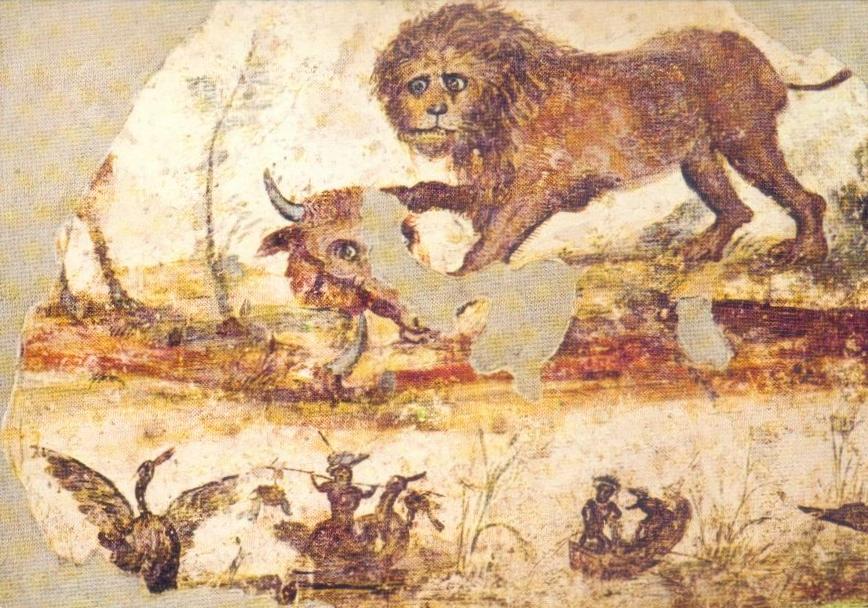
Painting of a Nilotic scene (c. 2.5 x 1.5 m.). Tomb 17-18. Found in 1935.
Helbig 3184. Guida p. 109 nr. 14. Heinzelmann 2000, Abb. 134 (in situ). Museo Ostiense. Inv. 142.
Tomb 32 is also called Tomba dei Claudii, "Tomb of the Claudii". It contains marble urns for the ashes of freedmen and slaves of the Emperor Claudius.
Tomb 33 was built by Decimus Folius Mela in the first half of the first century AD. Here a painting of Orpheus and Eurydice in the underworld was found. To the left is the gate of the underworld, in front of which are the dog Cerberus and a seated man with the word ianitor (doorkeeper). In the centre are Orpheus and Eurydice. In the upper right part we see Pluto and Proserpina. Below them is Ocnus, making a rope that is eaten by a donkey. This painting has been dated to the first half of the third century AD.
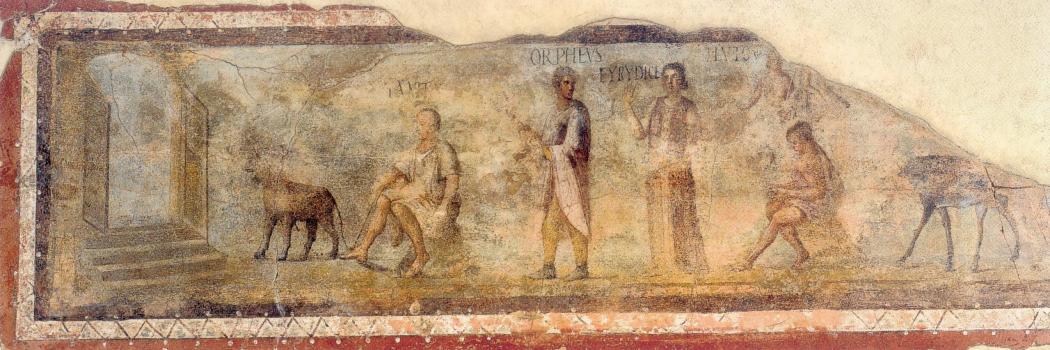
Orpheus and Eurydice in the underworld. Tomb 33. Vatican museums.
Photo: Donati 1998, pl. 61.
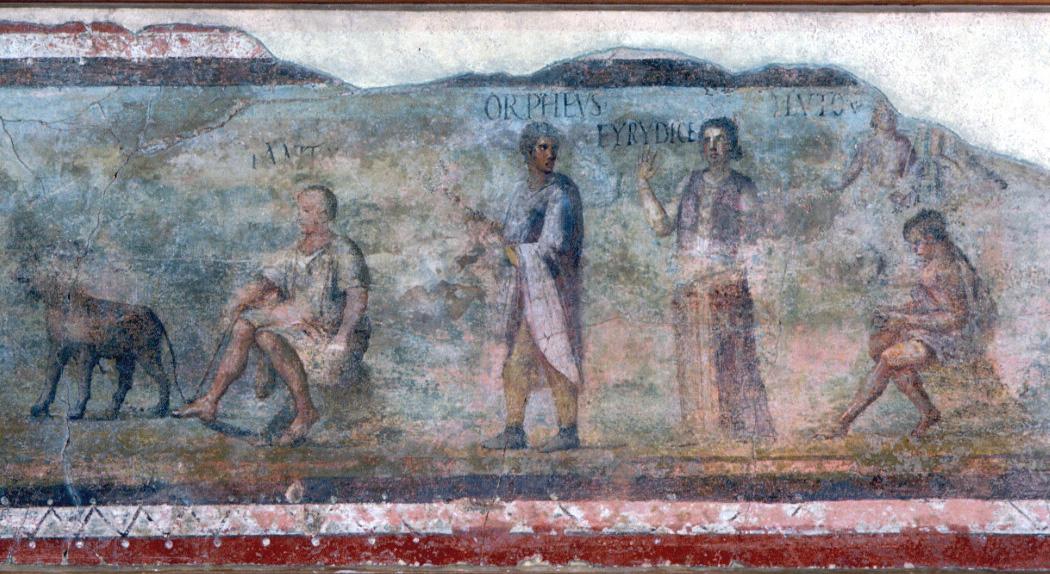
Orpheus and Eurydice in the underworld. Tomb 33. Vatican museums. Photo: Giovanni Lattanzi.

The interior of tomb 33. The painting was located top left, where a stretch of plaster is missing. Photo: ICCD E035638.
Tomb 34 is perhaps identical to the Tomba dei Caecilii, "Tomb of the Caecilii", that was excavated by Visconti. Here paintings were found of the rape of Proserpina and a scene from a tragedy, from the Severan period.

The Rape of Proserpina. Tomb of the Caecilii. Vatican museums. Photo: Giovanni Lattanzi.

Scene from a tragedy. Tomb of the Caecilii. Vatican museums. Photo: Giovanni Lattanzi.
More paintings were discovered in a nearby tomb. It was excavated by Visconti, but has not been identified (perhaps it is tomb 31). One painting shows five men participating in a meal in honour of the dead (refrigerium). Their names are painted above them: [---]mus, Felix, Foebus, Restutus and Fortunatus. With a gesture Foebus is calling for attention. The other persons hold conical glass beakers (first half of the third century AD). On another wall were a painting of Mercurius and, next to the deity, the famous painting of the ship Isis Giminiana.
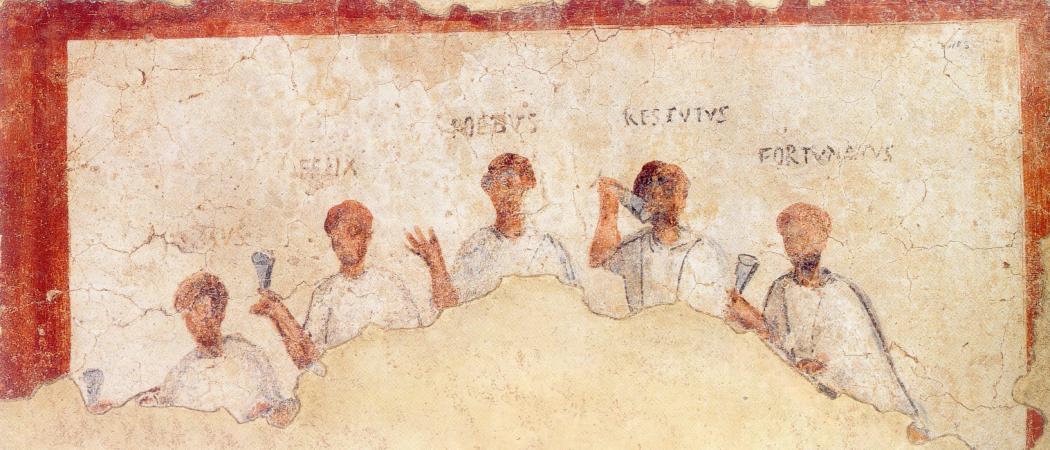
Painting of a meal in honour of the dead. Vatican museums. Donati 1998, pl. 62.
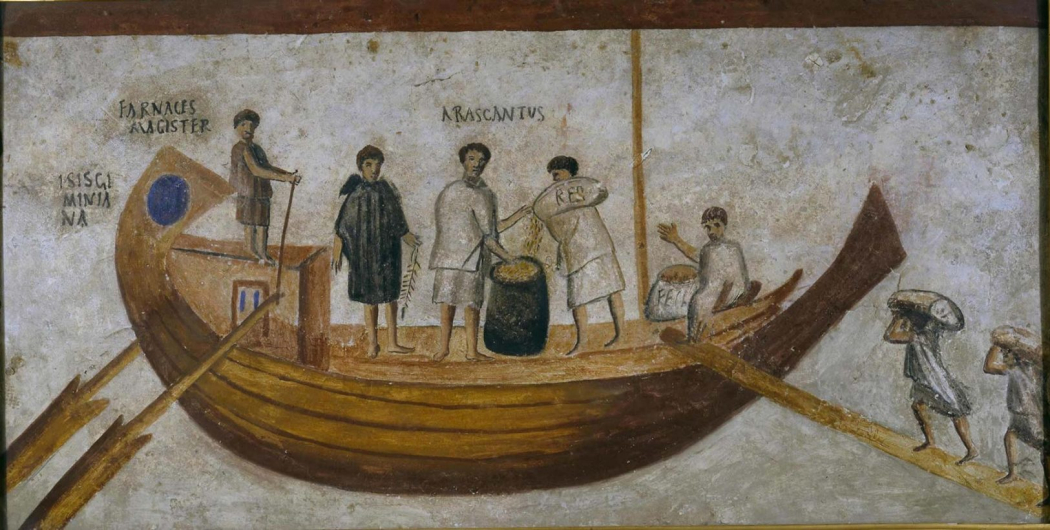
Click to enlarge. The painting of the Isis Giminiana. Photo: Vatican Museums.
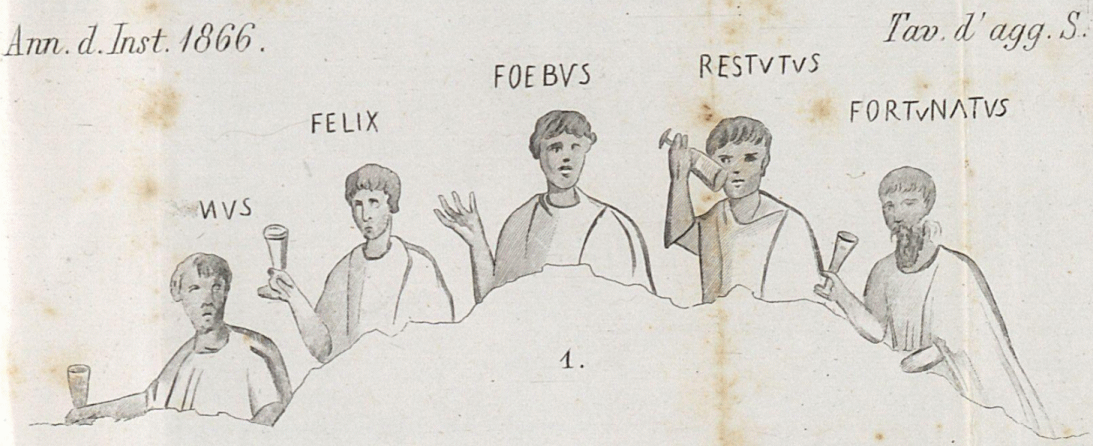

The paintings of a funerary meal and of Mercurius standing next to the ship Isis Giminiana, as seen in 1866.
Vatican Museums. Images: AnnInstCorrArch 38 (1866), Tavv. S,1 and T.
Photos

The necropolis seen from the south. Photo: Bing Maps.

The necropolis seen from the south. Photo: Jan Theo Bakker.